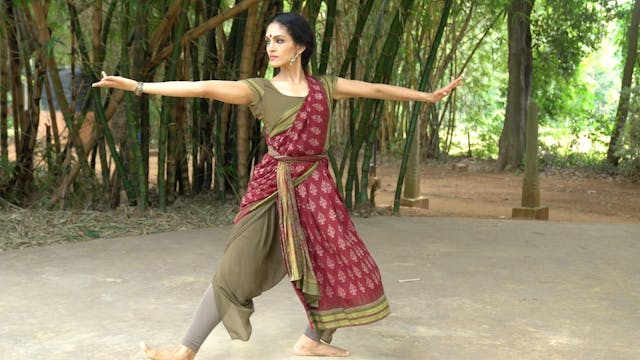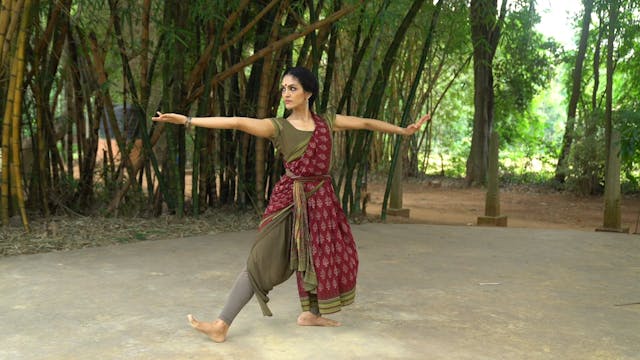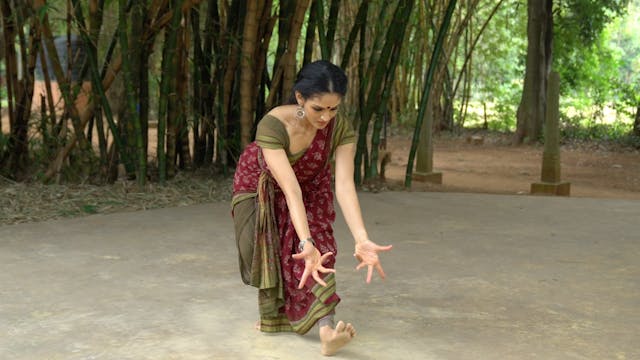The Thattadavu introduces concepts of rhythm to the beginner student through various patters of striking the floor with the foot. Do these in sequence to progressively build clarity in the articulation of the foot with the floor. Keep your hips stable and try not to move from side to side. It is better to stop when you begin to lose strength in your legs, take a break ,and start again rather than push through all the speeds while shifting your hip.
The 7th Thattadavu is the only one that shifts weight in during the Adavu to lift the opposite leg for a beat inbetween. .
Up Next in Adavus: 1st Set
-
Naatadavu 1
This Adavu has a stretching action in the leg where the foot is flexed and the heel is placed on the floor. The alignment of the hip bones is important in this. The turn-out and stability in the Araimandi position of the dancer must have developed by the time he/she starts the Naatadavu. If this ...
-
Naatadavu 2
This Adavu has a stretching action in the leg where the foot is flexed and the heel is placed on the floor. The alignment of the hip bones is important in this. The turn-out and stability in the Araimandi position of the dancer must have developed by the time he/she starts the Naatadavu.
The se...
-
Naatadavu 3
The third Naatadavu stretches the leg out to the front. If you are unable to keep your back straight when doing this, please refer to the flexibility section and practice the tips for forward bends and try again.


